Cities in Southeast Asia are often host to relics of their colonial past. Kuching, the capital of the Malaysian state of Sarawak, is no exception. One of the city’s most prominent historical sites is Fort Margherita. Built in 1879 on the banks of the Sarawak River, the fort once served as Kuching’s primary defence against river borne invasions.
Fort Margherita is no longer an active fort, and since 2016 has housed the Brooke Gallery – a small museum / exhibition sponsored and operated by the Brooke Trust, covering the era of Brooke dynasty rule over Sarawak from 1841 to 1946.
What was the Brooke dynasty?
Sarawak as we know it today was ruled for 105 years as a personal kingdom under the Brooke dynasty. This arrangement traces its roots to 1839 when a former soldier-turned-adventurer named James Brooke helped to put down a rebellion against the Sultan of Brunei in the area surrounding Kuching. In return, Brooke received governorship over Sarawak from the Sultan of Brunei, and thereafter complete sovereignty from the Sultanate in 1842.
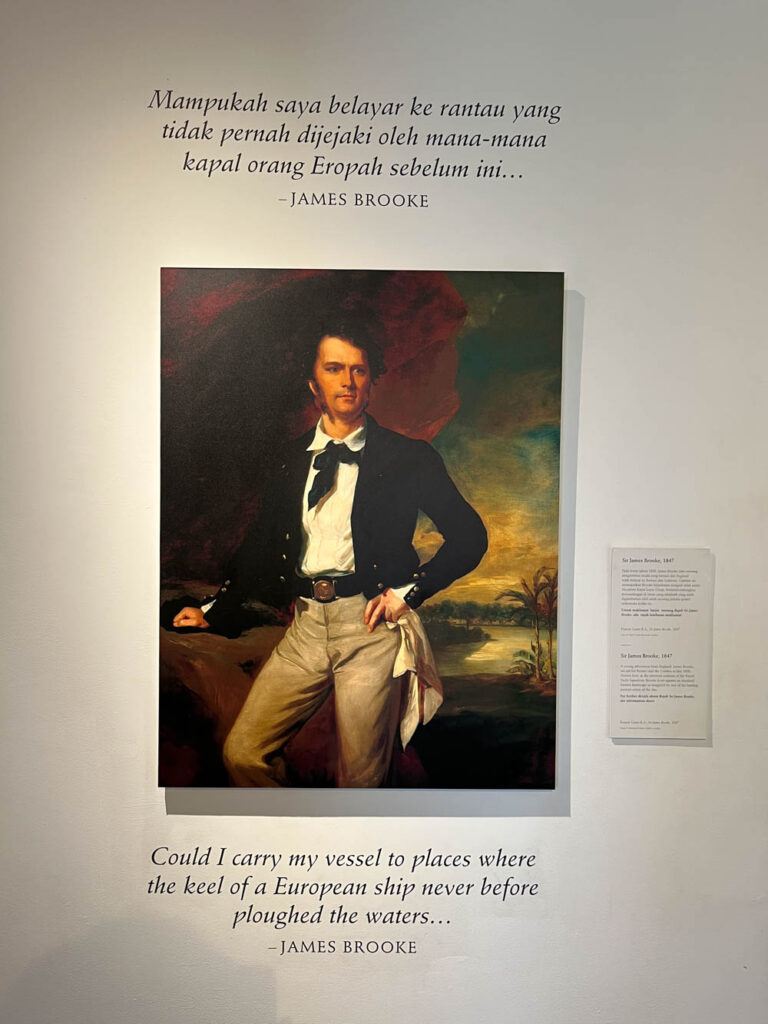
Brooke dynasty rule lasted from 1841 to 1946, during which time the Kingdom was administered successively by 3 “Rajahs” – James himself, his successor Charles Brooke, and Charles’ successor Charles Vyner Brooke. The Raj of Sarawak (alternatively the “Kingdom of Sarawak”) then progressively enlarged its territory at the expense of the Sultanate of Brunei, resulting in the present borders of both Sarawak and Brunei.
In 1941, the enlarged Sarawak was occupied by Imperial Japan. The occupation lasted until the end of World War 2, whereupon the restored Vyner reasoned that the State’s financial difficulties justified the end of the Raj and the handover of Sarawak to Britain. Sarawak spent the next 17 years as a British Crown Colony before forming the Federation of Malaysia in 1963 alongside Sabah and the Federation of Malaya.
Fort Margherita
The fort was constructed during the reign of Charles Brooke at a cost of $8100 Sarawak dollars, and was named after his spouse Margaret de Windt, the Ranee of Sarawak. The complex was designed to resemble an English castle, and consists of a 3-storey crenellated square tower block and a small courtyard surrounded by high walls containing cannon ports.

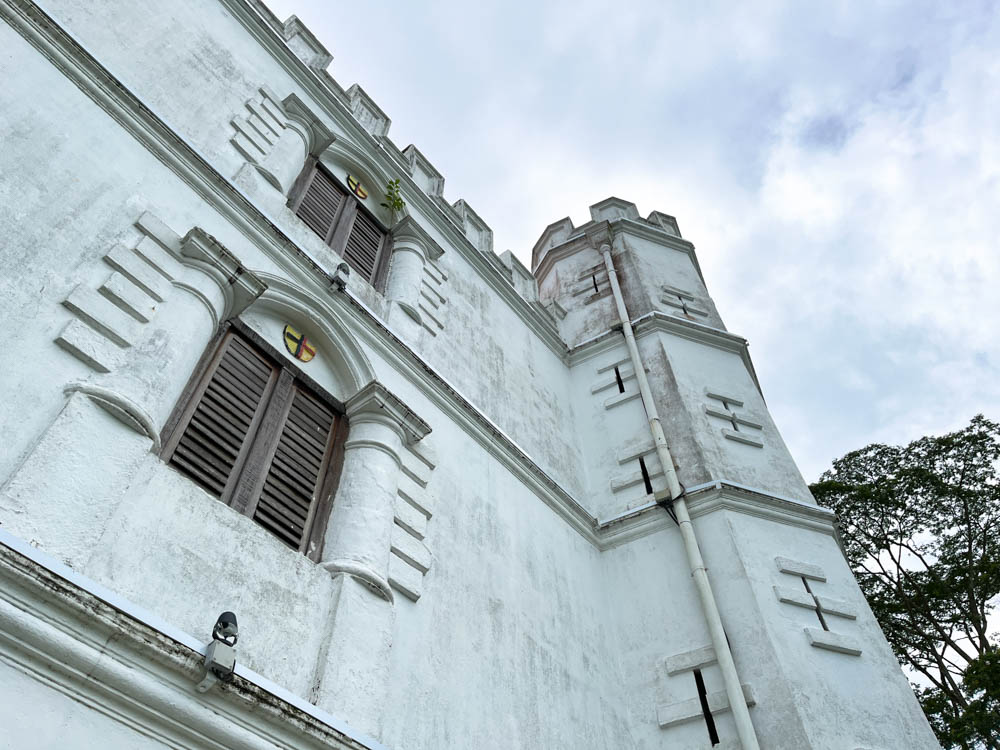
2 round towers stand at the edge of the courtyard, and the doors to one of the towers curiously has a white skull painted on them.
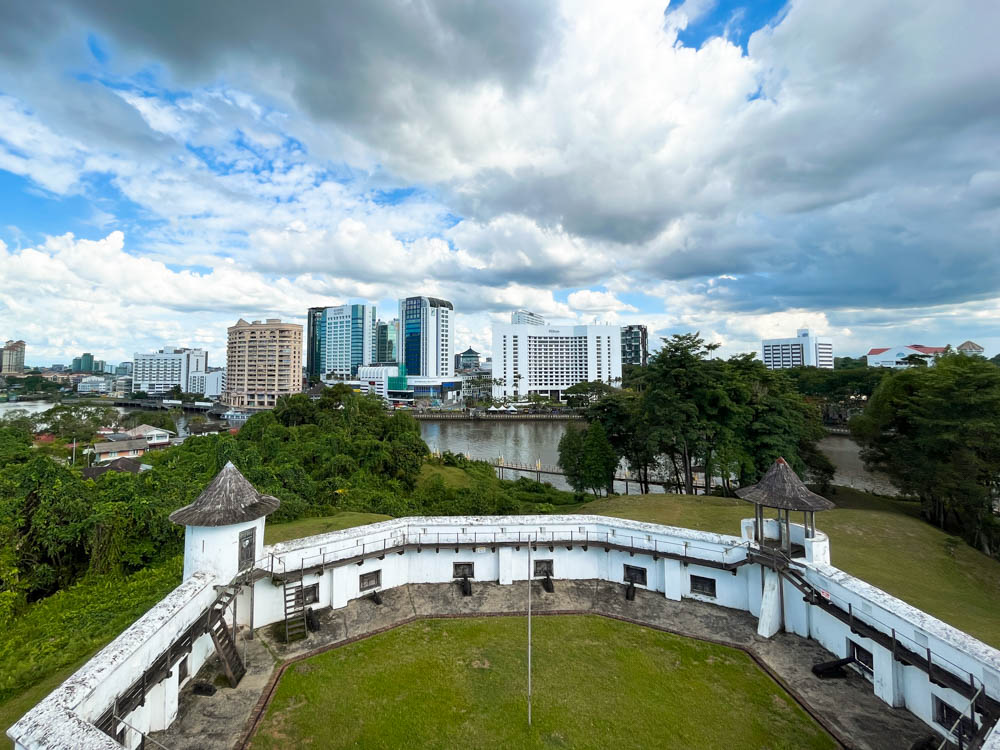
Fort Margherita was restored by the National Heritage Department of Malaysia between 2012 and 2014, and was then handed back to the Sarawak Museum Department for the development of the Brooke Gallery.
The Brooke Gallery
The Gallery spans all 3 floors of the square tower block, and displays a variety of artefacts from the Brooke era. Each floor is dedicated to a particular era of Brooke dynasty rule, corresponding roughly to the respective reigns of each of the 3 Rajahs.
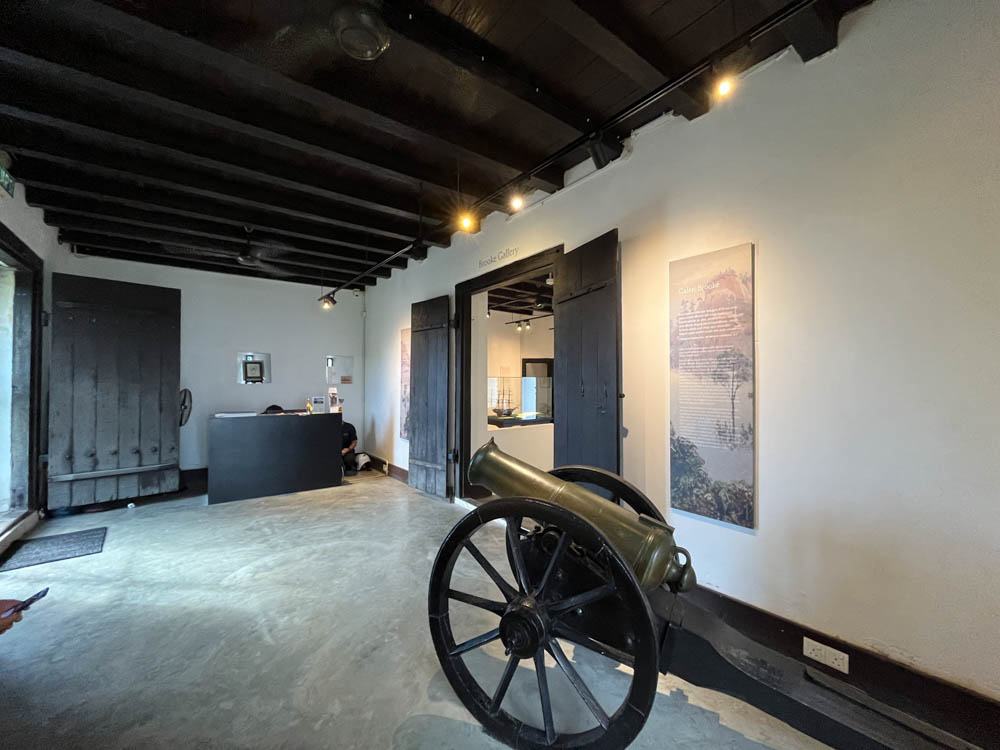
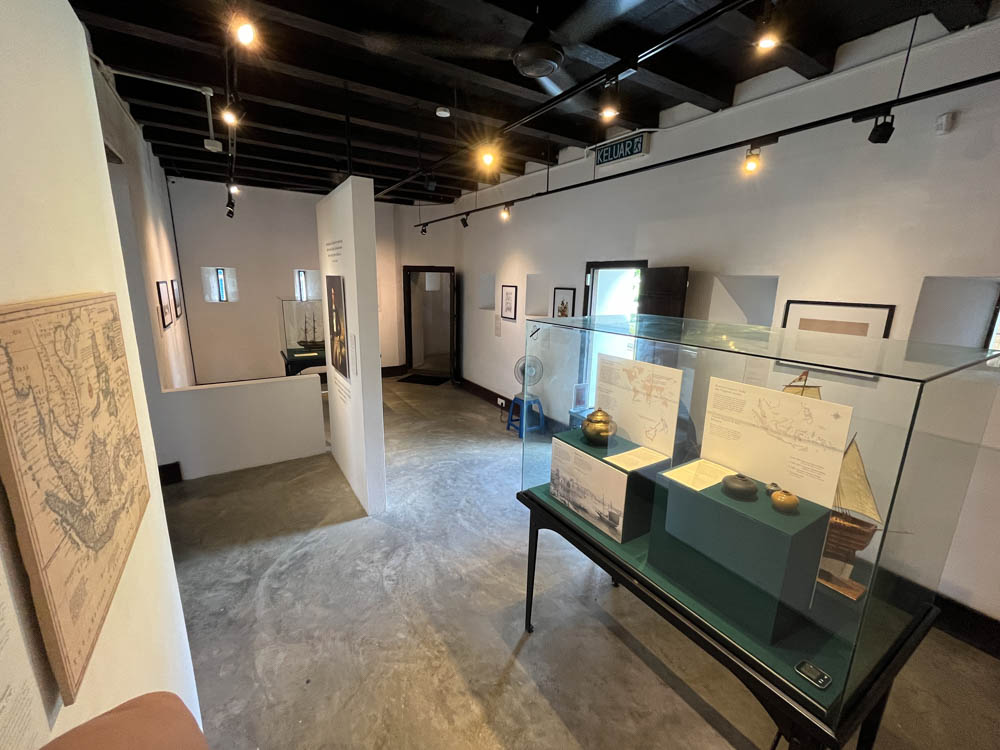
The display of exhibits are arranged according to specific categories (eg: Law & Order, Architecture etc), and the accompanying information text provides substantial context in both Bahasa Melayu and English.
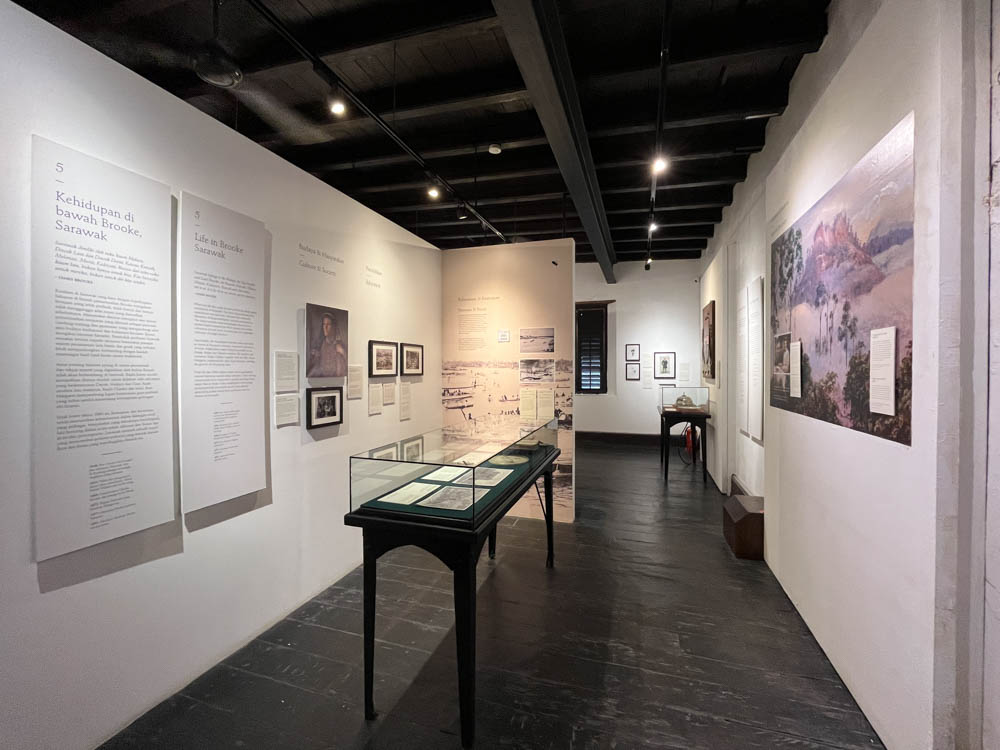
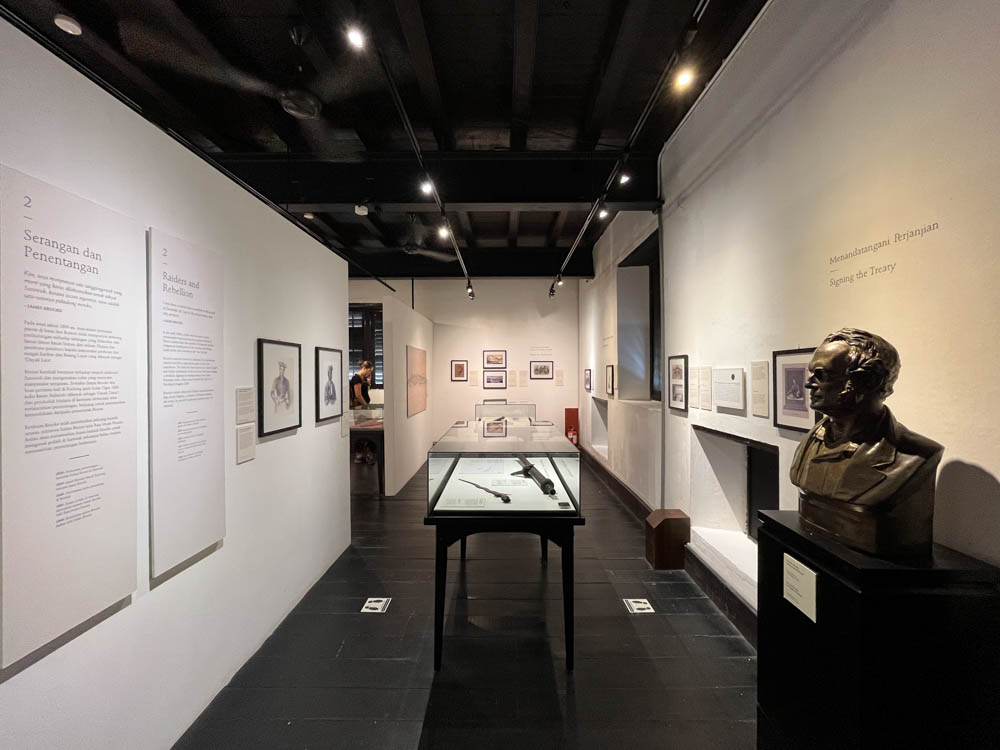
One of the more prominent exhibits is the flag of the Raj, bearing a crown on a red-black cross on a yellow field. These same colours are still represented on the current state flag of Sarawak, sans cross and crown.
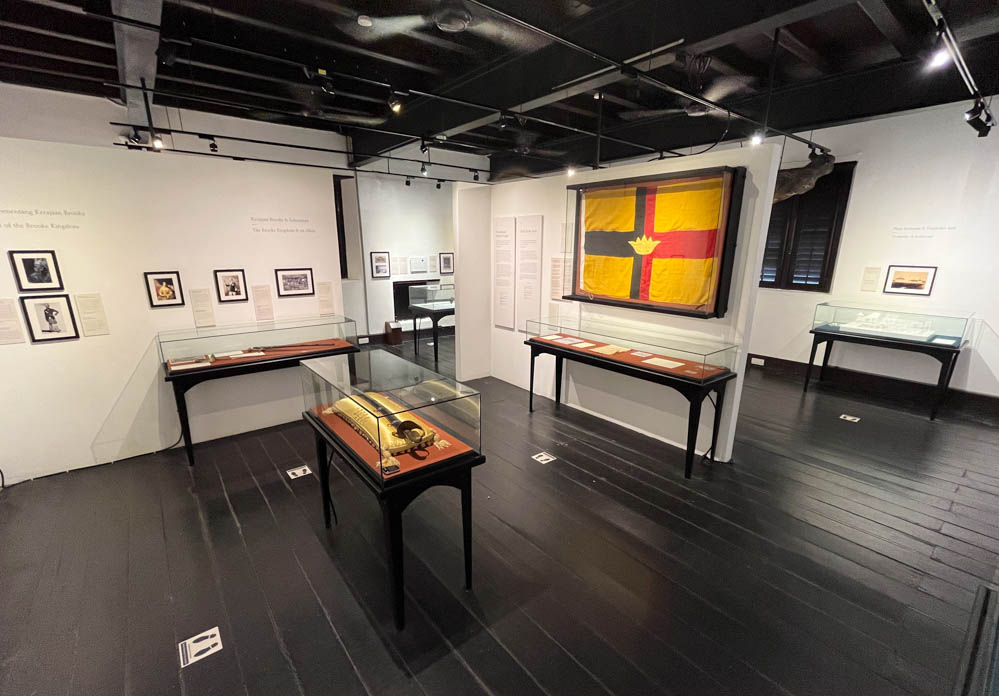
It is clear that great care has been put into the design and upkeep of the Gallery, and I would count the Gallery as one of the better Malaysian museums. More importantly, it provides a glimpse into an era of Sarawak’s history that isn’t always necessarily understood by non-Sarawakians.
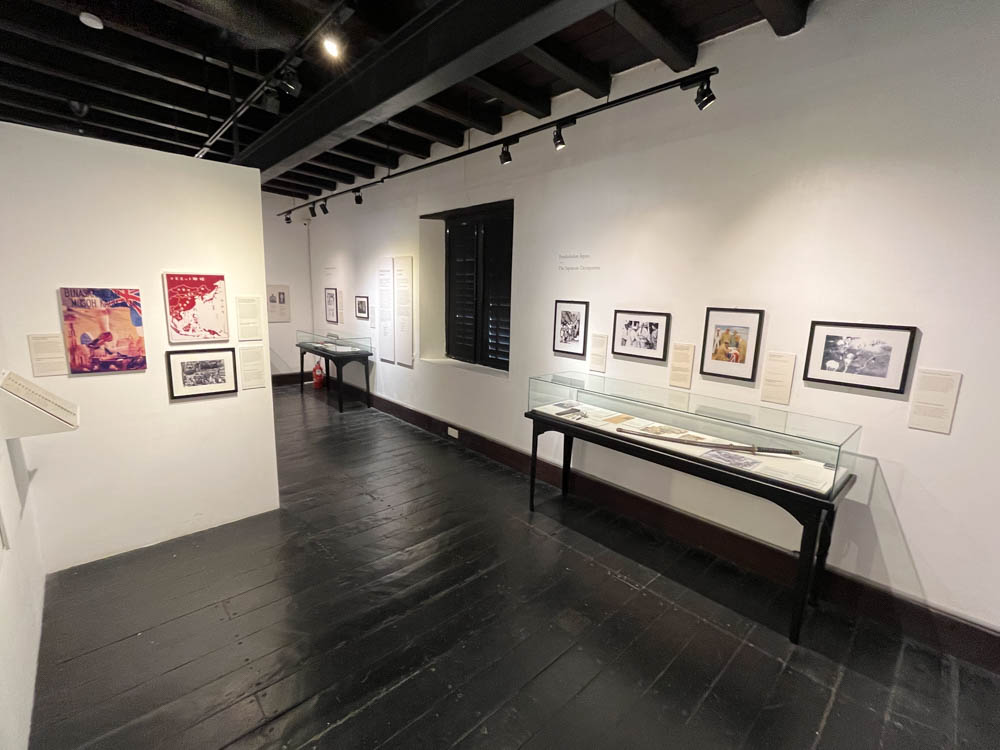
I would observe, however, that the displays in the Gallery do carry some romanticism for the Raj era and neither does the Gallery attempt any critique of Brooke dynasty rule. This is to be expected, since the gallery is sponsored by the Brooke Trust after all, and isn’t a full fledged public museum by any means. Nevertheless, this doesn’t detract from the Gallery’s impressive quality, and I would argue that it is very much worth seeing by visitors to Kuching.
Visitor Information
Opening Hours
Monday to Sunday, Public Holidays: 09:00 am – 4:45 pm.
Admission Fees
| Class of Visitors | Admission (MYR) |
|---|---|
| Locals (Citizens of Malaysia) | 10.00 |
| Non-Malaysians | 20.00 |
| Concession / Children (Aged 7-12) | 5.00 |
| Children (Under 7) | Free |
Where is Fort Margherita?
Fort Margherita is located on the northern bank of Sarawak River directly across from the city centre.
Its location is easily spotted thanks to its proximity to the State Legislative Assembly and the newly built Dataran Ibu Pertiwi and its very tall flagpole.
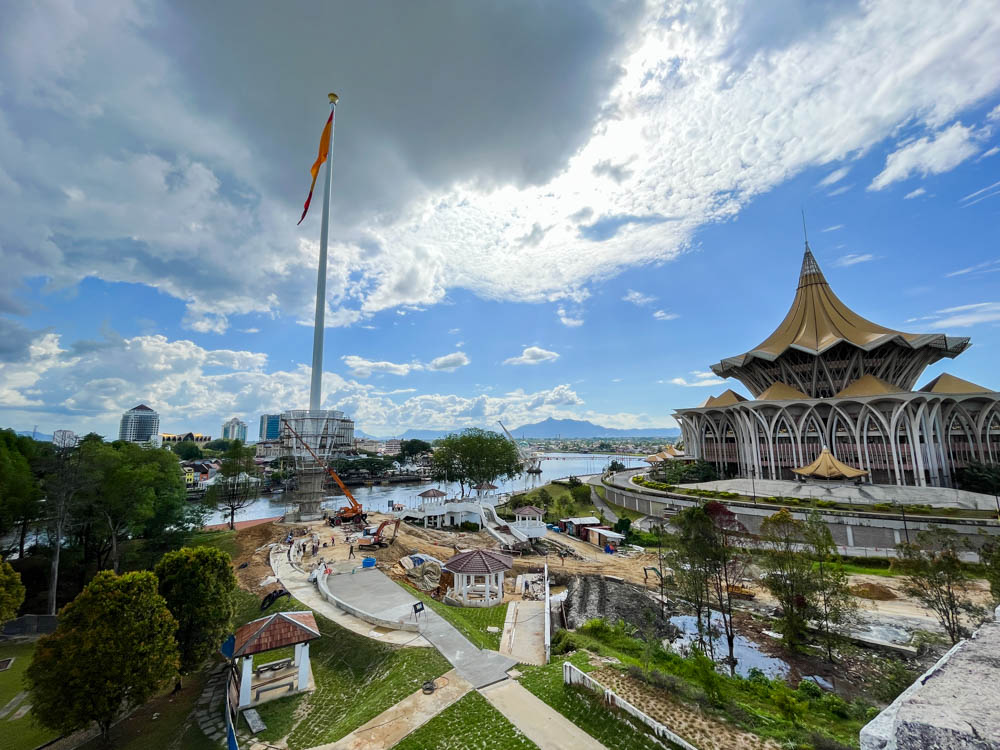
Getting to Fort Margherita
There are 2 primary ways of getting to Fort Margherita from Kuching city centre. The first is via water taxis known as “Bot Penambang”, which for an affordable sum of RM 1.00 will take passengers across the Sarawak River from piers on the city-side. The closest jetty to the fort is the Fort Margherita jetty, which leads up to the fort via a series of steps and Dataran Ibu Pertiwi.
Alternatively, the Fort is also accessible by car. There is a sizable parking lot a short walk away from the fort with no parking fees imposed.
External Links
- Official Website of Brooke Museums, the management body of the Brooke Gallery.
- Official Website of the Brooke Trust.